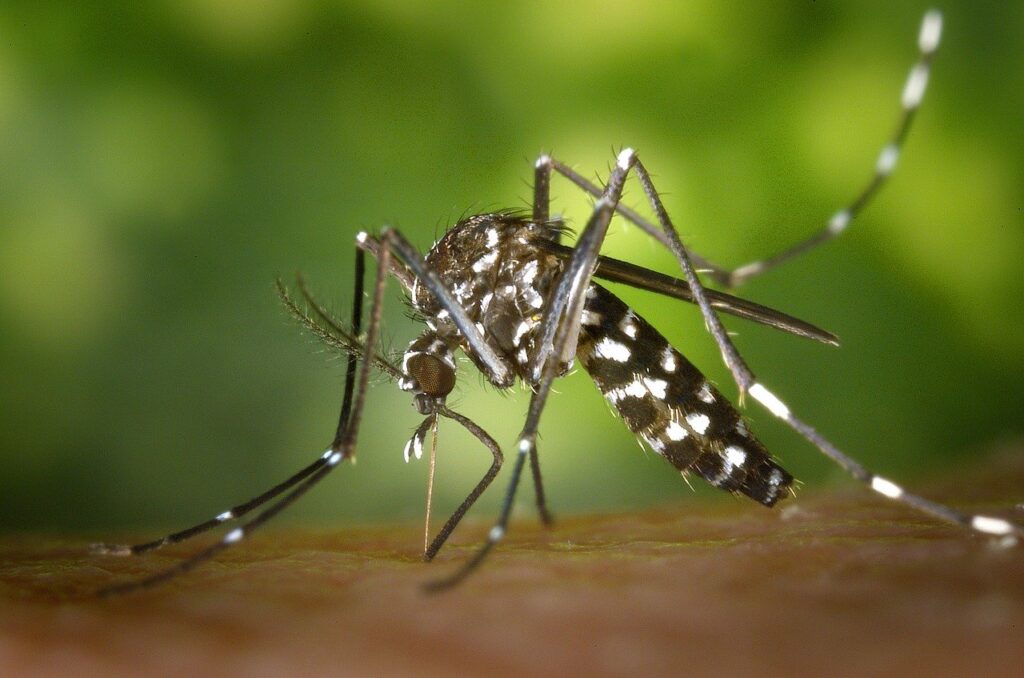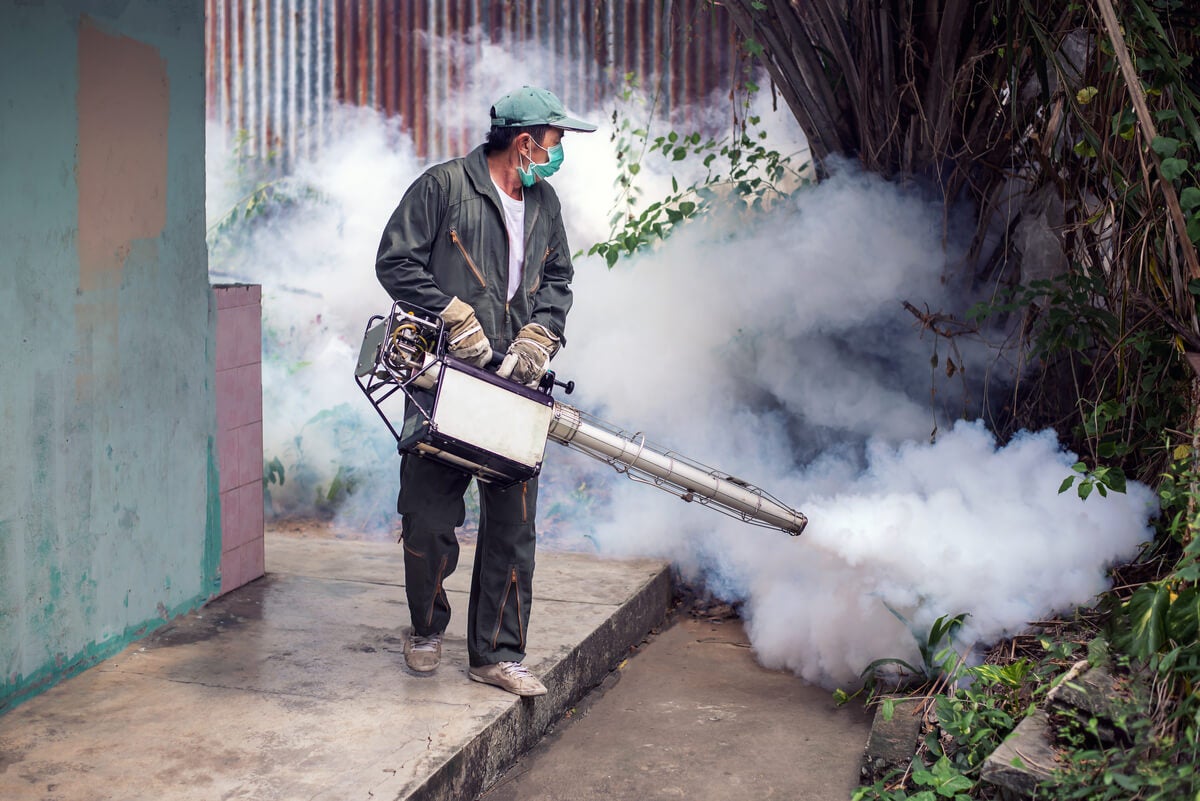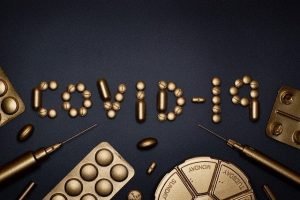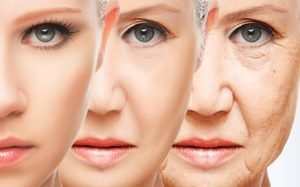Mosquito-borne diseases : diseases transmitted by mosquitoes

Mosquito-borne diseases are very common in countries with tropical climates. For this reason, we will tell you what the symptoms and treatment of all these pathologies are so that you can identify them.
Many infections caused by bacteria, viruses and parasites are spread by insects. One of the biggest vectors around the world is mosquitoes. Next, we will tell you about the main diseases transmitted by mosquitoes and how they can be treated.
At present, insect-borne diseases are a serious public health problem in various countries. According to data from the World Health Organization ( WHO ), each year they kill 700,000 people around the world . Despite efforts to control them, various environmental and social factors complicate the task.
Mosquitoes as vectors of disease
All insects capable of transmitting disease are known as vectors . In this way, certain arthropods such as mosquitoes, flies, triatomines and ticks stand out. All of them transport the microorganisms that cause infections from one host to another.
The transmission of pathogens can be both biological and mechanical, that is, related or not to the insect’s blood intake. In this sense, when the insect is biological it will be necessary for the virus, parasite or bacterium to complete its life cycle.
Of all the existing vectors, mosquitoes are the best known. This perhaps is due to the large number of diseases they can carry. All of them are transmitted biologically, that is, the mosquito must ingest blood from a sick patient to become a vector .
There are 3 different genera of mosquitoes; They all have different characteristics and are capable of transmitting specific diseases. The 3 known genera are Anopheles, Aedes, and Culex .The use of repellants is indicated as a preventive measure to stop the vectors.

Malaria
One of the main mosquito-borne diseases is malaria or malaria. This word refers to bad air and is known in this way because it was believed that it was transmitted through the environment.
This infection is produced by parasites of the genus Plasmodium, although the species of the parasite can change depending on the geographical location. They are transmitted by mosquitoes of the genus Anopheles , which is why it is very common to observe the disease in countries with tropical climates.
The life cycle of these parasites is complex. The main complication is anemia, since they infect the host’s red blood cells, multiply within them and, after 48 or 72 hours, break them.
Symptoms
The clinical manifestations appear between 10 and 15 days after the mosquito bite . The main symptom in people with malaria is fever above 38 ° C interspersed with periods when the temperature will be normal.
In addition, there may also be jaundice (yellowing of the skin and mucous membranes), chills and profuse sweating, muscle aches, nausea and vomiting, generalized weakness and seizures in severe cases.
Treatment
The treatment of infection vary depending on the species that is causing it . Taking into account that the most frequent etiological agents are P. vivax and P. falciparum, treatment will be based on the use of chloroquine in combination with primaquine .
When resistance to chloroquine is suspected, it can be combined with some artemisinin derivatives , with antibiotics (doxycycline or clindamycin) or with mefloquine and artesunate. Also, intravenous fluids may be needed on many occasions.
Dengue
Another of the most common mosquito-borne diseases is dengue. This infection is produced by the dengue virus that belongs to the Flaviviridae family . It has 4 different serotypes called DEN-1, DEN-2, DEN-3 and DEN-4.
This virus is transmitted by mosquitoes of the genus Aedes , largely by the species Aedes aegypti. This is a characteristic disease of tropical and subtropical countries. However, according to WHO studies , cases have occurred around the world and up to 390 million infections are accounted for per year.
Symptoms
The incubation period of the virus within the human body can vary between 4 and 10 days after the bite. The main symptom presented is fever of more than 40 ° C, continuous and without hourly predominance . Sometimes there is also a body rash and swollen lymph nodes.
As if that were not enough, many patients have the following symptoms :
- Pain in the muscles, bones and joints.
- Weakness in the body
- Pain behind the eyes
- Nausea and vomiting
Treatment
Currently there is no specific treatment for dengue, so the therapeutic option will be aimed at treating the symptoms. The main medicine used is acetaminophen or paracetamol to reduce fever, in addition to adequate fluid replacement.
Symptoms, and the infection itself, usually resolve within 2 to 7 days. However, if there are any complications, you should be kept under constant medical surveillance.
Yellow fever
This is one of the most dangerous and deadly mosquito-borne diseases out there. It is quite common in Latin America and Sub-Saharan Africa. It is caused by the yellow fever virus that belongs to the Flaviviridae family .
Yellow fever is transmitted, to a large extent, by mosquitoes of the genus Aedes , specifically by the species Aedes aegypti. Although those belonging to the genus Haemogogus are also capable of transmitting it.
This infection owes its name to the jaundice that some patients present, so their skin may turn yellow. 15% of those infected develop serious complications and, on average , half of them die within 7 to 10 days.
Symptoms
Symptoms of the disease can appear 3 to 6 days after the mosquito bite. It is convenient to divide it into two phases : an acute and a toxic one. Each one will have a different symptomatology.
- Acute phase : This is the initial period of the disease and patients present with fever, muscle aches, nausea, vomiting, and loss of appetite. However, the signs disappear between 3 and 4 days.
- Toxic phase : A small portion of patients may enter the toxic phase after the symptoms of the acute phase have subsided. At this point, there is a systemic compromise, leading to liver failure , kidney failure, and heart damage.
Treatment
Unfortunately, there is no specific antiviral treatment for yellow fever. However, prompt care reduces the risk of complications . In this way, it is necessary to attack all symptoms early, so the fever must be reduced and adequate fluid replacement must be had.
There is an immunization for prevention. In this sense, a single dose of the vaccine is sufficient to confer immunity and protection for life.
Zika

Zika has had recent outbreaks that underscored its importance in current epidemiology.
Zika is a viral infection discovered in the 1940s. It is caused by a flavivirus and transmitted by mosquitoes of the genus Aedes. This disease is common in countries with tropical climates in Latin America, Africa and Asia.
Currently, outbreaks of this disease have been recorded in more than 83 countries around the world. Although it is not usually fatal, it can cause spontaneous abortions and serious birth defects in pregnant women such as microcephaly , joint and eye damage, brain damage and reduced body movements.
Symptoms
The symptoms of this disease is very mild . In fact, most patients are asymptomatic . In those cases in which the clinical presentation is evident, the symptoms usually appear between 3 and 14 days after the mosquito bite with mild fever, skin rashes, joint and muscle pain, general weakness and red eyes.
On the other hand, few cases have been reported where the Zika virus is related to damage to the peripheral nerves and to the appearance of Guillain-Barré syndrome .
Treatment
Because the symptoms are not serious, no specific treatment is necessary . Just lowering the fever and reducing muscle aches will be enough. In addition, the symptoms resolve spontaneously after a week.
Chikungunya
This is an infection caused by the chikungunya virus and is transmitted by Aedes aegypti mosquitoes . However, other species of the same genus can also carry the virus.
The word chikungunya comes from Africa and its literal translation is ‘doubled from pain’. This is due to the severe muscle aches it causes . Before 2013, the pathology was only found in Asia, Africa, Europe and the Indian Ocean. However, at the end of that year, several outbreaks were reported in Latin American and Caribbean countries.
Symptoms
The symptoms of chikungunya do not usually vary much from those caused by other mosquito-borne diseases. In this sense, between 3 and 7 days after being bitten by an infected mosquito, patients may present the following symptoms :
- High fever: higher than 39 ° C.
- Pain: severe muscle and joint with headache .
- Inflammation: in the joints and lymph nodes.
- Rashes.
Treatment
As with Zika, this disease does not have a specific treatment and symptoms usually resolve within a week . However, it is recommended to drink plenty of fluids, rest, and reduce fever with various antipyretics such as paracetamol.

How to prevent mosquito-borne diseases ?
If you are in countries with tropical climates where these diseases are endemic, the most advisable thing is the constant use of repellent . In addition, using mosquito nets at night will prevent them from biting you while you sleep. In the specific case of yellow fever, you must have up-to-date vaccinations.
On the other hand, the best way to prevent this type of infection is to eradicate the vector’s habitat . For this it is necessary to eliminate all types of stagnant water in the home, since this is its means of reproduction. Another helpful tip is constant spraying of the home and work area.







